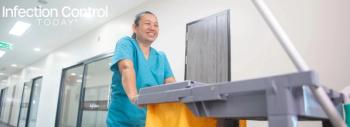
Environmental Colonization of Carbapenem-Resistant Acinetobacter baumannii in the ICU
In May 2015,
The researchers conducted a one-day point prevalence screening (PPS) of the patients and environment in the MICU. We screened patients using endotracheal tube aspirates and swabs from nares, axillae, groin, rectum, wounds, and exit sites of drains. We collected environmental samples from patients’ rooms and environment outside the patients’ rooms. CRAB isolates from the PPS and clinical samples over the subsequent one month were studied for genetic relatedness by whole genome sequencing (WGS).
The researchers collected 34 samples from seven patients and 244 samples from the environment. On the day of PPS, they identified eight CRAB carriers: three who screened positive and five previously known clinical infections. They detected environmental contamination in nearly two-thirds of the rooms housing patients with CRAB. WGS demonstrated genetic clustering of isolates within rooms but not across rooms. They analyzed four CRAB isolates from clinical samples following the PPS. One genetically-related CRAB was identified in the respiratory sample of a patient with nosocomial pneumonia, who was admitted to the MICU five days after the PPS.
The researchers conclude that extensive environmental colonization of CRAB by patients highlights the importance of environmental hygiene. The transmission dynamics of CRAB needs further investigation.
Source: Ng DHL, et al. Environmental colonization and onward clonal transmission of carbapenem-resistant Acinetobacter baumannii (CRAB) in a medical intensive care unit: the case for environmental hygiene. Antimicrobial Resistance & Infection Control.2018;7:51
Newsletter
Stay prepared and protected with Infection Control Today's newsletter, delivering essential updates, best practices, and expert insights for infection preventionists.






